
Orthodontics
Here at Friendly Dental, we have been doing orthodontic treatment, using braces, since 1999. Originally, our orthodontic work was an additional service for our client base, but these days it has become almost exclusively what we do. Well over a thousand successful cases have been treated, from mild to severe, and from as far away as Rotorua, Palmerston North, Gisborne, and even Levin.
Rather than give a lengthy explanation of the process, we opted to rely on the age-old adage “a picture is worth a thousand words”. Instead of gathering pictures from a text book or other unrelated source, we decided to provide some before and after shots and overviews from cases that we have worked. We have intentionally avoided using any jargon, as we feel orthodontic treatment is sometimes made more difficult to understand than need be. We are aware that this is an anxious time for you - grasping the basic concepts can really help to make it a little less so.
Finally, you are most welcome to come visit us for a free consultation, however, it is much appreciated if everyone who wishes to have the process explained attends - this avoids us having to repeat ourselves.
We look forward to seeing you!
Blocked-Out Teeth
Before
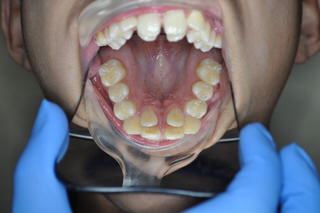
After
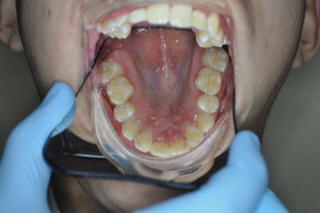
Blocked-out teeth are teeth which, due to lack of space, have been shifted behind their normal position and blocked out by the teeth in front.
In the following case, the top teeth were so crowded that the two "lateral" teeth, with nowhere to fit, had been pushed behind the middle teeth. We managed to fit the blocked-out teeth where they belong. The end result is a vast improvement.
Before
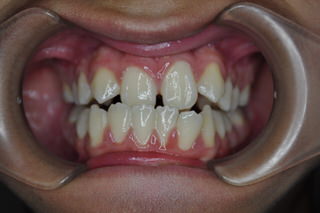
After
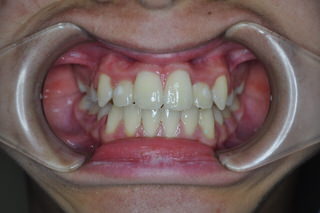
Before
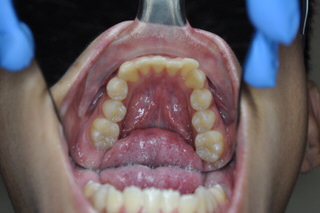
After

Crowding (Severe)
Before (a)
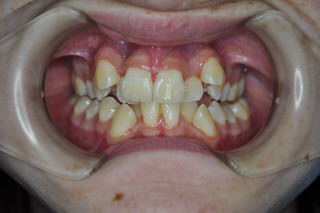
After (a)

If your jaw doesn't have enough space for your teeth to fit normally, your teeth can bunch up, overlap, and twist. This is called crowding.
Both of the following sets of teeth illustrate severe crowding. Set (a) required extractions. Set (b) did not.
There are a number of factors that need to be accounted for when determining whether extractions are required or not, and one of the reasons we take a patient's records at the start.
Before (a)
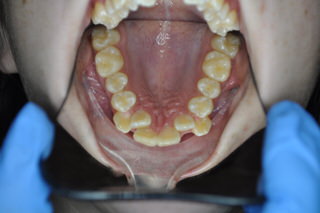
After (a)
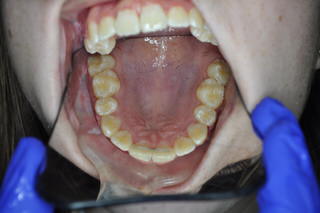
Before (a)
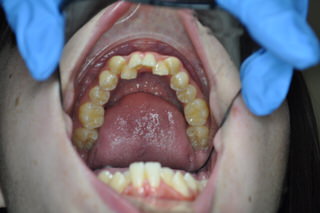
After (a)

Before (b)
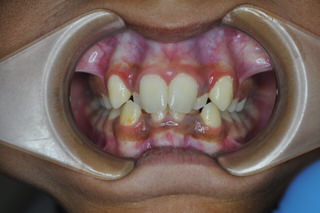
After (b)

Before (b)
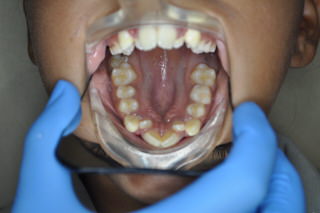
After (b)
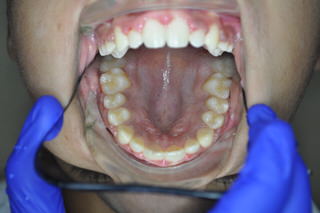
Before (b)
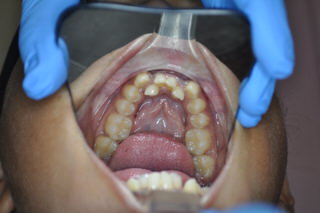
After (b)
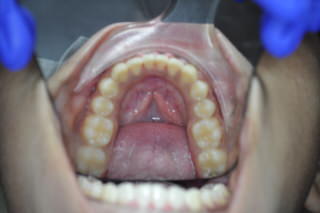
Crowding (Mild to Moderate)
Before
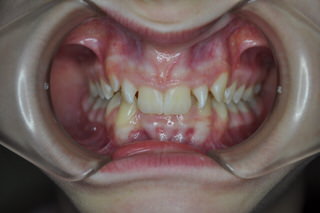
After
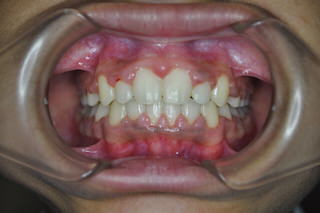
If your jaw doesn't have enough space for your teeth to fit normally, your teeth can bunch up, overlap, and twist. This is called crowding.
These teeth show less severe crowding, or crookedness, and is typical of the amount of crowding we would be able to straighten without taking any teeth out, though we we have some with even more crowding than this. You can see from the final before & after how sometimes crowding can be "unraveled" without having to remove teeth.
There are a number of factors that need to be accounted for when determining whether extractions are required or not, and one of the reasons we take a patient's records at the start.
Before
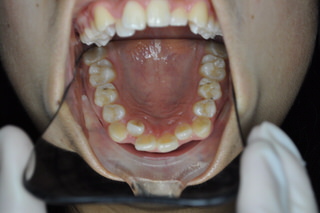
After

Impacted Canines
Before
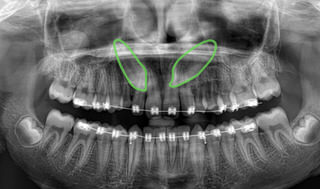
After
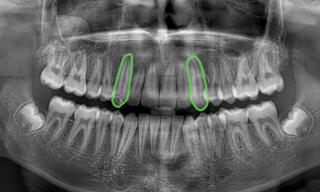
An impacted tooth is a tooth which, for whatever reason, has been blocked from breaking through the gum. Oftentimes, impacted teeth cause no obvious symptoms and are only discovered during a routine X-ray at the dentist's office.
The teeth below look almost perfect, don't they? In reality, there is an adult eye tooth missing. What you see in the before x-ray is an impacted canine - it is stuck, and will never grow down. Often, in conjunction with a surgeon, an overlying baby tooth can be removed, the adult tooth uncovered, and a little gold chain glued to the tooth so we can pull it down with braces.
Unfortunately, the cost of the surgery is additional to the cost of the braces.
Before
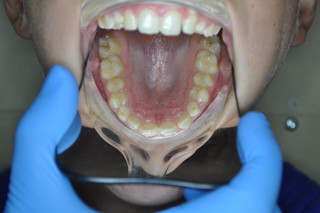
After
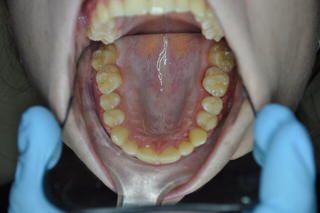
Large Overjet
Before
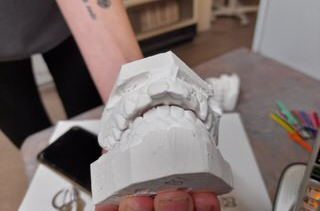
After

An overjet is when the upper teeth protrude outward and sit over the bottom teeth. This is often incorrectly called an over bite.
In the this case, the patient had a large over bite, also known as a deep bite, where the lower teeth bite high up behind the top teeth. This can be so severe it actually hurts, and traumatises the palate - I speak from personal experience here.
Treatment required removal of two top teeth, as well as braces, to allow us to bring the top teeth back to meet the lowers as they should. You will notice the teeth were very crooked to start with.
Sometimes you may hear jaw surgery mentioned. This is done more to correct a facial problem, rather than a tooth problem, and it is extremely uncommon for a person to present wanting their facial problem fixed, though it has happened.
Before
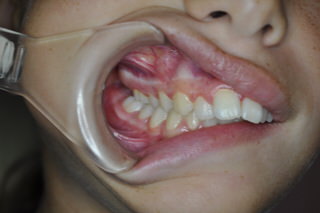
After
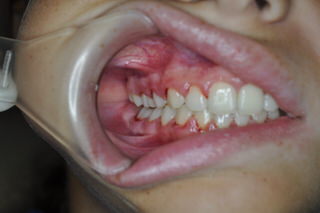
Before

After

Open Bite
Before
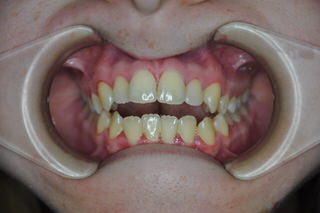
After
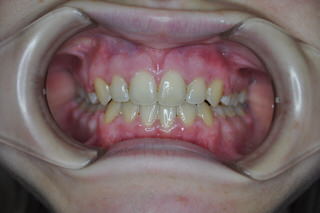
When a person has an open bite, the upper and lower front teeth do not come together when the mouth is closed. The result is a gap or opening between the rows of teeth.
In this, the teeth are actually quite straight, but you may have noticed that they don't meet together at the front. This is called an "open bite", and is surprisingly hard to fix. As silly as it seems, it often needs to have teeth extracted to fix it. This is what we did with this case - two top teeth and two bottom teeth were removed, and braces were fitted.
Spacing
Before
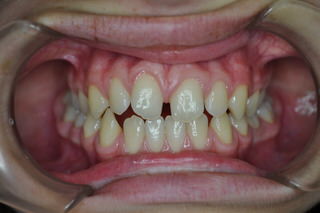
After
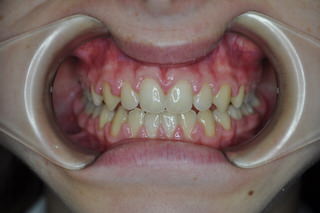
The teeth below obviously have gaps between them. The last thing we want is to take teeth out, if anything it would be nice to have more teeth. We used braces to bring all the teeth into place.
Before

After

Before
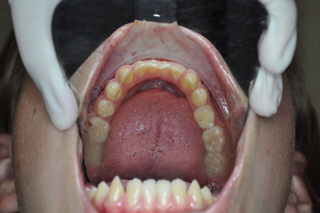
After
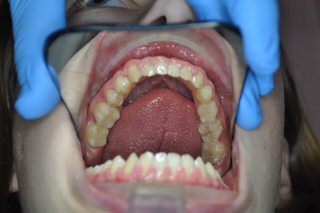
Under Bite
Before

After

An under bite, or cross bite, is where the bottom teeth overlap the top teeth. It is quite common on the back teeth, and less common on the front.
Front teeth can be quite difficult to correct. As a rule, if the person can get their front teeth "edge to edge", we are likely to be able to fix it without needing to do jaw surgery. In this case we removed two lower teeth, as well as using braces, and the back cross bite was fixed by expanding the top teeth with a device called a palatal expander.
As you can see, we could not fully fix the way the back teeth do not meet, though it is a lot better. This is because it is caused by the person always pushing their tongue between their teeth as they swallow. Such habits often cannot be broken, so the effects they have on the teeth cannot be fixed. Imagine if you never stopped sucking your thumb for example.
Have any more questions?